Best spring vegetables to grow.
What Is Included in This Post:
- Introduction to Spring Vegetables
- Benefits of Growing Your Own Spring Vegetables
- Why I Started My Gardening Journey!
- Choosing the Right Spring Vegetables for Your Garden
- Preparing Your Garden for Spring Vegetables
- Planting and Caring for Spring Vegetables
- Common Pests and Diseases for Spring Vegetables
- Harvesting and Using Your Spring Vegetables
- Conclusion and Final Tips for Successful Spring Vegetable Gardening
- Frequently Asked Questions
Spring is a season of growth and renewal, and what better way to embrace the spirit of this vibrant season than by growing your own vegetables? Whether you are an experienced gardener or just starting out, cultivating spring vegetables can be a rewarding and fulfilling endeavor. Not only do spring vegetables offer incredible freshness and taste, but they also provide numerous health benefits and cost savings. This article will guide you through the process of selecting, planting, caring for, and harvesting the best spring vegetables for your garden. Get ready to dig in and discover the joys of growing your own delicious and nutritious spring bounty.
This is a pinnable post. Tap or hover over any image in this post to pin to your Pinterest Boards.
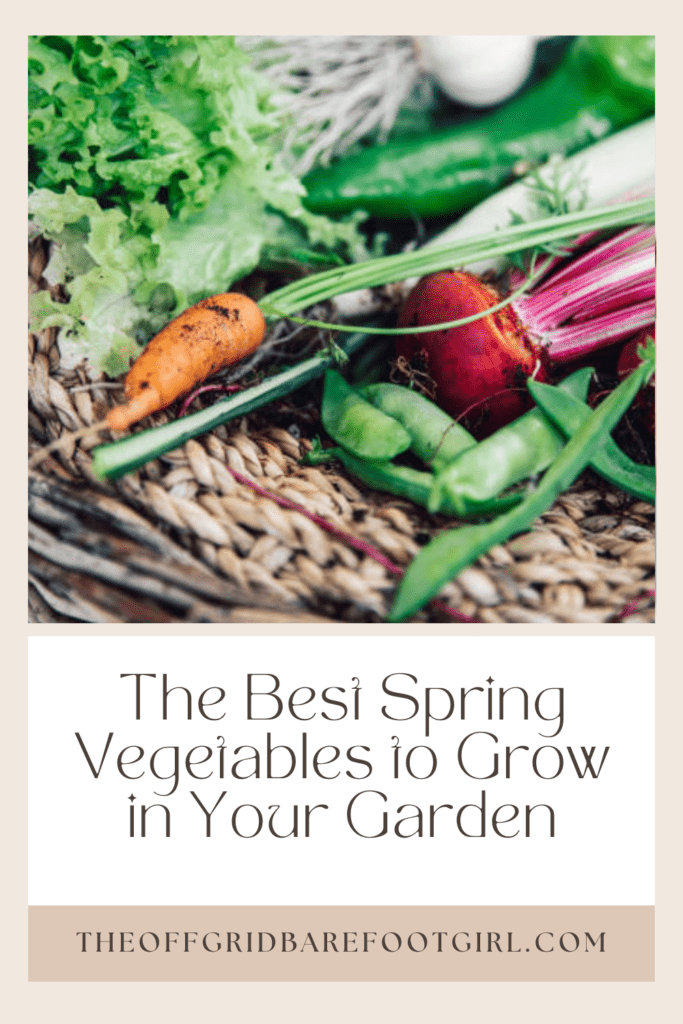
Introduction to Spring Vegetables
What Are Spring Vegetables?
Spring vegetables are the superheroes of the garden, bursting with freshness and flavor when the weather starts to warm up. These are the crops that thrive in cool temperatures and can tolerate a bit of frost. Think of them as the early birds of the vegetable world, ready to kickstart your garden and brighten up your plate after a long winter slumber.
Why Grow Spring Vegetables?
Besides the fact that they taste absolutely delicious, growing your own spring vegetables comes with a slew of benefits. First and foremost, it’s incredibly satisfying to nurture a tiny seed into a thriving plant that nourishes you. Plus, it’s a great way to save some green in your wallet while enjoying the freshest produce possible.
Benefits of Growing Your Own Spring Vegetables
Freshness and Taste
There’s nothing quite like the satisfaction of picking a plump, juicy tomato straight from your own garden and taking a big bite. Homegrown vegetables have a level of freshness and flavor that store-bought produce simply can’t match.
Cost Savings
Growing your own spring vegetables can also help you save some serious cash. Instead of forking over your hard-earned money at the grocery store for mediocre veggies, you can harvest your own organic goodies at a fraction of the cost.
Nutritional Value
When you grow your own vegetables, you have control over how they are cultivated. No more mystery chemicals or preservatives. You can ensure that your veggies are grown with love and without any harmful substances. This means you’ll be filling your plate with highly nutritious, vitamin-packed goodness.
Environmental Sustainability
By growing your own vegetables, you’re reducing the carbon footprint associated with commercial agriculture. You won’t need to rely on long-haul transportation or excessive packaging. Plus, you can compost your kitchen scraps, giving back to the Earth that nourishes your plants. You can build a mini nature conservation project, right in your backyard!
Why I Started My Gardening Journey!
Several years ago, I embarked on a gardening journey with little more than a desire to connect with nature and a curiosity about cultivating my own food. Armed with a few basic gardening tools and a collection of seeds, I began transforming a small patch of my backyard into a flourishing container garden. The initial days were marked by trial and error, as I navigated through soil preparation, plant care, and the delicate balance of sunlight and water.
Over time, as I dedicated myself to learning from experienced gardeners, experimenting with different plant varieties, and embracing the rhythm of the seasons, my garden started to thrive. I witnessed the joy of planting a tiny seed and watching it grow into a robust, yielding plant. The taste of homegrown vegetables, the vibrant colors of blooming flowers, and the peaceful moments spent amidst the greenery have become the markers of my gardening success.
Today, my garden stands not only as a source of nourishment, but also as a testament to the rewards that patience, dedication, and a bit of green-thumb intuition can bring.
My garden grew from a few 5-gallon buckets on a rented trailer lot to a thriving backyard homestead on my newly purchased property! My previous garden could only be a container garden as I was not allowed to till the ground. Gardening in 5-gallon buckets was great since it allowed me to grow a ton of vegetables and move them around whenever the sun played the, “Catch the Rays” game with me! Plus, 5-gallon buckets are like a mobile version of a square-foot garden since one bucket is equivalent to one square-foot space.
Choosing the Right Spring Vegetables for Your Garden
Cool-Season vs. Warm-Season Vegetables
It’s important to know the difference between cool-season and warm-season vegetables when planning your spring garden. Cool-season veggies, like lettuce, peas, and radishes, can tolerate cooler temperatures and even a light frost. Warm-season veggies, like tomatoes and peppers, prefer warmer weather. Make sure to choose crops that are suited to your region’s climate. You can always grow your warm-season crops later.
Popular Spring Vegetable Options
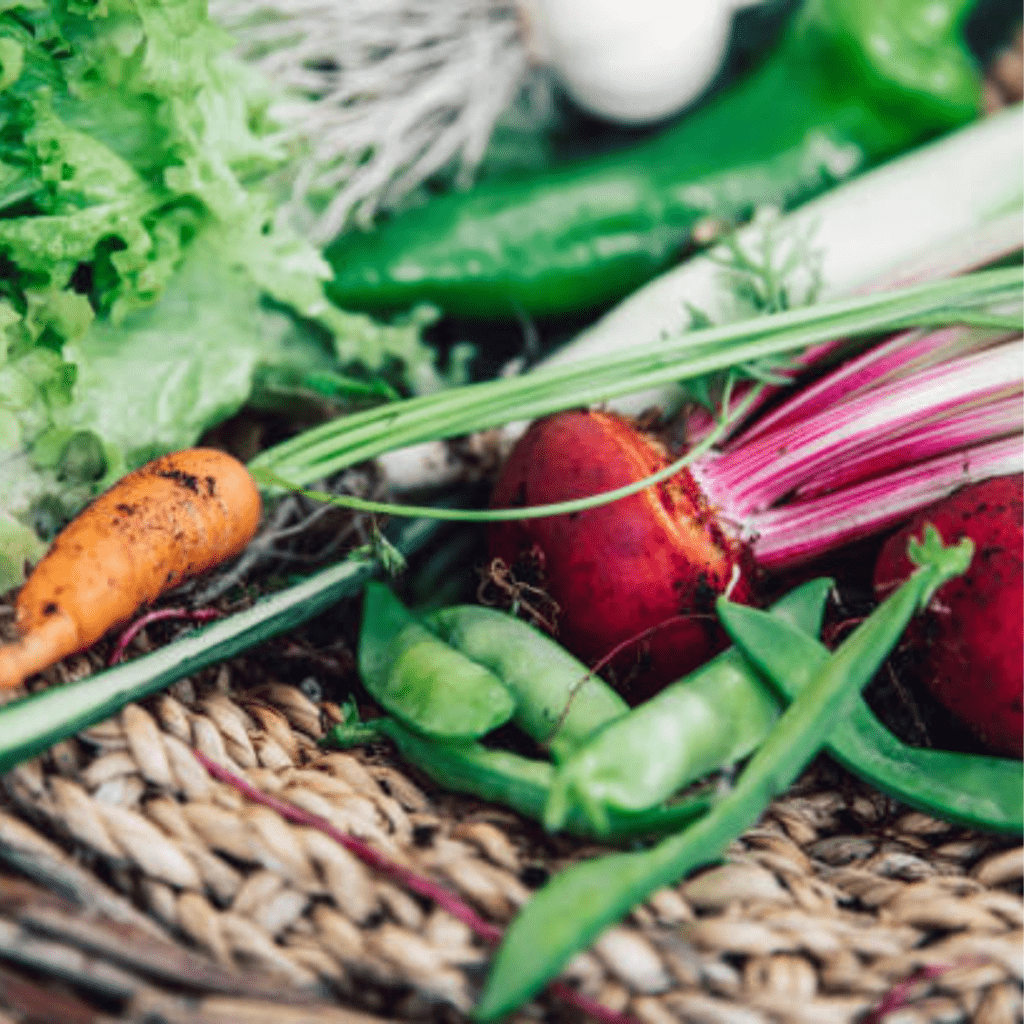
With so many options available, it can be overwhelming to choose which spring vegetables to grow. Some popular choices include carrots, spinach, kale, broccoli, and onions. These veggies are not only delicious, but also relatively easy to grow. Here are more spring vegetable options to grow in your garden:
- Lettuce.
- Spinach.
- Radishes.
- Carrots.
- Peas.
- Broccoli.
- Cabbage.
- Kale.
- Swiss Chard.
- Beets.
- Arugula.
- Onions.
- Garlic.
- Cauliflower.
- Asparagus.
Considering Space and Climate
When selecting spring vegetables for your garden, take into account the amount of space you have and the specific climate conditions in your area. Some vegetables, like peas or asparagus, require more room to spread out, while others can be grown in containers. Additionally, consider your local climate and choose vegetables that will thrive in the temperatures and light conditions of your region.
Preparing Your Garden for Spring Vegetables
Clearing and Cleaning the Garden Beds
Before you start planting your spring vegetables, it’s important to clear out any remnants of last season’s plants. Pull up those lingering carrot tops and remove any weeds or debris that may interfere with your new crops. Give your garden a fresh start and hit the reset button on your vegetable plot.
Soil Preparation and Amendments
Give your plants the best chance at success by preparing your soil properly. Add organic compost or well-rotted manure to enrich the soil with nutrients. They’ll reward you with robust growth and bountiful harvests in return. Here are some ways you can prepare your garden soil:
- Soil Testing:
- Before making any amendments, conduct a soil test to determine its pH and nutrient levels. This will guide you in choosing the right amendments.
- Compost:
- Incorporate well-rotted compost into your soil to improve its structure, water retention, and nutrient content. Compost also introduces beneficial microorganisms.
- Manure:
- Well-aged animal manure, such as cow or horse manure, can provide essential nutrients. Make sure it’s well-composted to avoid burning plants.
- Mulching:
- Apply a layer of organic mulch (straw, wood chips, or leaves) around plants to retain moisture, suppress weeds, and regulate soil temperature.
- Vermicompost:
- Introduce worm castings or vermicompost to enhance soil structure and provide a slow-release source of nutrients.
- Peat Moss:
- Peat moss can improve water retention in sandy soils and enhance aeration in clay soils. However, consider sustainability concerns when using peat moss.
- Perlite or Vermiculite:
- These lightweight materials improve soil aeration and drainage. They are especially useful in container gardening.
- Lime or Sulfur:
- Adjust soil pH by adding lime to raise pH in acidic soils or sulfur to lower pH in alkaline soils. This is important for nutrient availability to plants.
- Bone Meal:
- Bone meal is a good source of phosphorus, which is essential for root development and flowering. It’s particularly beneficial for flowering plants.
- Blood Meal:
- Blood meal is high in nitrogen and can be used as a quick-release fertilizer to promote leafy green growth.
- Fish Emulsion:
- Fish emulsion is a liquid fertilizer that provides a quick source of nutrients, especially nitrogen, and can be used as a foliar spray.
Resources for Soil Preparation and Amendments
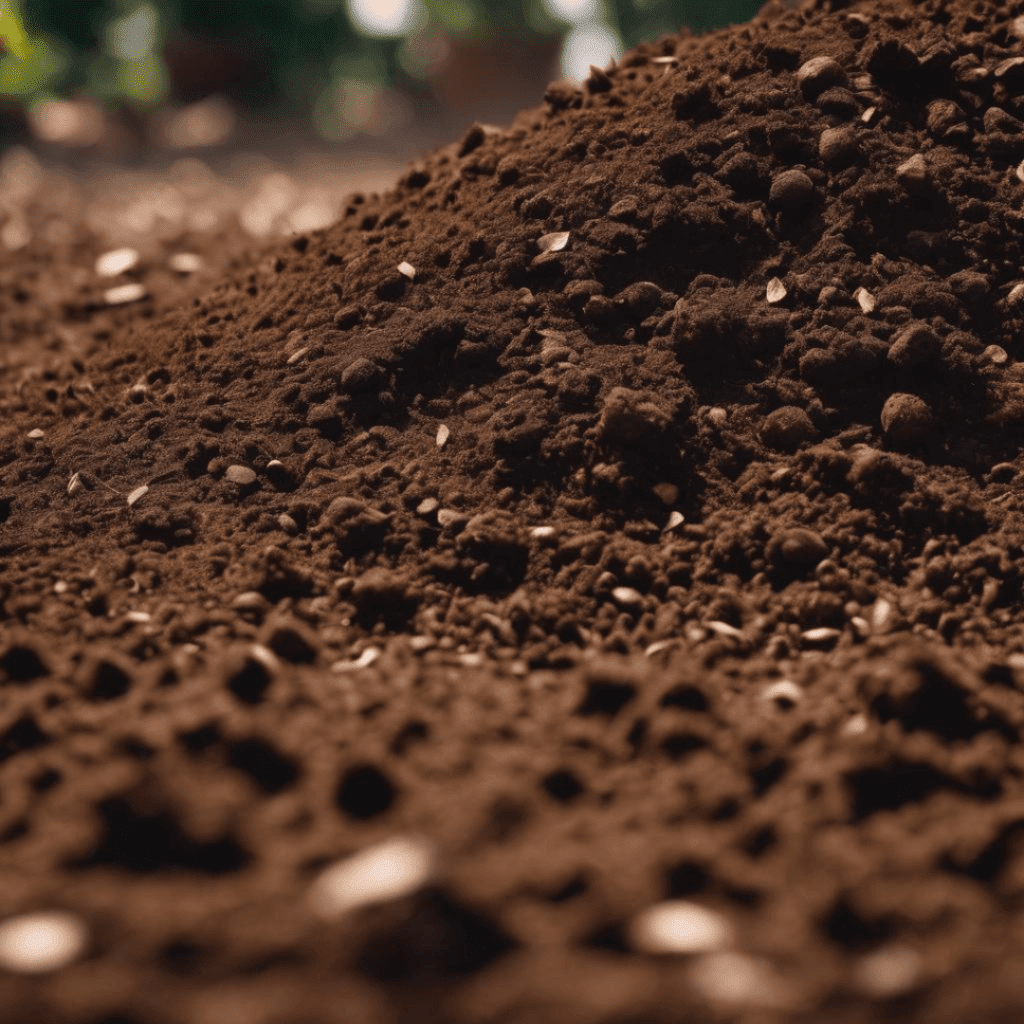
Take a look at my other posts, where I go into further detail about improving your garden soil. From understanding the importance of soil composition and pH levels to learning about different types of organic matter and amendments you can add, I’ve got tons of valuable insights waiting for you. Whether you’re a seasoned gardener or just starting out, these posts will provide you with all the knowledge and guidance you need to create nutrient-rich and healthy soil that will give your plants the best possible chance to thrive.
- How to Use the Hand Twist Claw Tiller: Tackling Tough Soil
- Clever Ways to Incorporate Indoor Composting into Your Home
- How to Start Composting for the Garden: A Step-by-Step Guide
- The Ultimate Guide to Composting in Your Suburban Backyard
- How to Start a Worm Bin: Turning Kitchen Scraps into Black Gold!
- How to Fix Sandy Garden Soil with These Effective Organic Amendments
- How to Make Leaf Litter Mulch
- 4 Easy DIY Garden Soil Tests to Do Now
Providing Proper Soil Drainage
Just like humans, plants don’t like to have wet feet. Ensure your garden beds have good drainage to prevent waterlogged roots. Nobody likes soggy soil, not even the veggies. If your soil tends to retain water, consider raising your beds or creating drainage channels to keep things flowing smoothly. Here are some ways you can provide proper soil drainage for your garden:
- Raised Beds:
- Construct raised beds to elevate the planting area above ground level. This helps excess water drain away more easily.
- Add Organic Matter:
- Mix well-rotted compost or organic matter into the soil. This improves soil structure, allowing for better drainage in clayey soils and enhancing water retention in sandy soils.
- Use Gravel or Pebbles:
- Incorporate gravel or small pebbles into the soil to create air pockets and improve drainage. This is especially beneficial for container gardening.
- Amend with Sand:
- Adding coarse sand to heavy clay soils can improve drainage. However, avoid using too much sand, as it can lead to a concrete-like texture in the soil.
- Create Sloping Beds:
- Arrange your garden beds so that they slope slightly away from structures or low-lying areas. This helps water drain naturally.
- Install Perforated Pipes:
- Place perforated pipes or drainage tiles in the soil to facilitate water movement. These pipes can be placed at the bottom of planting holes or along the base of beds.
- Use Well-Draining Containers:
- If gardening in containers, ensure they have drainage holes at the bottom. Use a well-draining potting mix to prevent waterlogging.
- Build Swales or Berms:
- Create swales (depressions) or berms (raised mounds) to redirect water flow. This can be particularly effective in sloped landscapes.
Ensuring Adequate Sunlight
Spring vegetables need their daily dose of sunshine just like we need our morning coffee. Make sure your garden beds receive at least six hours of direct sunlight each day. If your plot is shrouded in shade, you might need to get creative by using reflective surfaces or strategically placing containers to maximize sunlight exposure. Your vegetables will thank you with vibrant colors and robust flavors. Here are some creative ways to ensure adequate sunlight reaches your spring garden:
- Strategic Plant Placement:
- Arrange your plants based on their sunlight requirements. Place taller plants on the north side of the garden to avoid shading smaller plants and ensure they receive adequate sunlight.
- Use Vertical Gardening Techniques:
- Vertical gardening allows you to grow plants upward, making the most of available sunlight. Install trellises, arbors, or vertical planters to grow vining plants or those with upward growth habits.
- Install Mirror or Reflective Surfaces:
- Place mirrors or reflective materials strategically to bounce sunlight onto shaded areas. Be cautious not to create intense hot spots that may harm plants.
- Prune Overhanging Branches:
- Trim nearby trees and shrubs to reduce shading. This allows more sunlight to reach the garden. Be careful not to damage the plants during pruning.
- Use Light-Colored Mulch:
- Apply light-colored mulch, such as straw or light gravel, around your plants. Light-colored surfaces reflect sunlight, helping to brighten shaded areas.
- Mobile Planters:
- Use mobile planters or raised beds on wheels. This allows you to move plants to sunnier spots as the sun’s position changes throughout the day.
- Create Sunlight “Wells”:
- Dig small, shallow depressions or “wells” around your plants. This helps collect and concentrate sunlight, especially in areas where the ground may be uneven.
Planting and Caring for Spring Vegetables
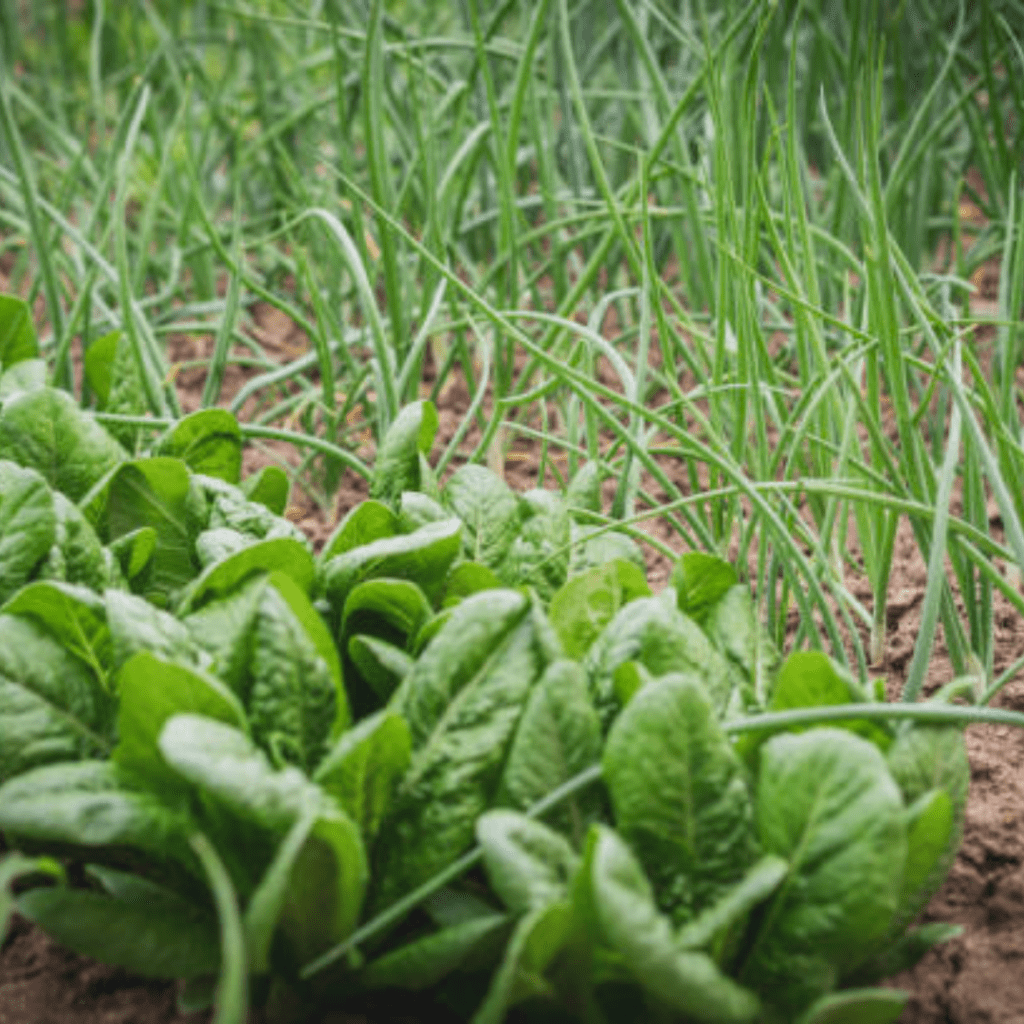
Spring is the perfect time to start growing your own vegetables. Not only will you save money, but you’ll also have the satisfaction of harvesting and enjoying your own fresh produce. Here are some tips for planting and caring for your spring vegetables:
- Prepare the Soil:
- Ensure well-draining soil by amending it with compost or well-rotted organic matter. Test the soil pH and make adjustments as needed. Loose, fertile soil encourages healthy root development.
- Start Seeds Indoors:
- For some vegetables, like tomatoes and peppers, start seeds indoors a few weeks before the last expected frost. Transplant seedlings outdoors once the soil has warmed up.
- Direct Sowing:
- For vegetables like peas, radishes, and carrots, sow seeds directly into the garden soil. Follow the recommended spacing and planting depth on seed packets.
- Provide Adequate Water:
- Keep the soil consistently moist, especially during germination and seedling establishment. Water at the base of plants to minimize the risk of fungal diseases. Use a drip irrigation system or water early in the day to reduce evaporation.
- Mulch:
- Apply a layer of organic mulch around plants to conserve soil moisture, suppress weeds, and regulate soil temperature. Mulching also helps prevent soil splashing onto leaves, reducing the risk of diseases.
- Fertilize Appropriately:
- Apply a balanced fertilizer or compost before planting, and consider side-dressing with a nitrogen-rich fertilizer during the growing season.
- Pest and Disease Management:
- Monitor your garden regularly for pests and diseases. Use organic pest control methods whenever possible, such as neem oil or insecticidal soap. Practice crop rotation to reduce the risk of soil-borne diseases.
Let’s elaborate further on some of these tips!
Starting Seeds Indoors
If you want to get a head start on your garden, starting seeds indoors is a great option. You’ll need some seed trays or small containers, a seed starting mix, and plenty of sunlight or grow lights. Plant your seeds according to the package instructions and keep the soil moist until they germinate. Once the seedlings have grown a few sets of leaves, you can transplant them into larger pots or directly into the garden.
Direct Sowing In the Garden
For some vegetables, such as radishes, lettuce, and peas, you can sow the seeds directly into the garden. Prepare the soil by removing any weeds and loosening it with a garden fork or tiller. Follow the seed packet instructions for spacing and planting depth, and make sure to water the area well after planting.
Watering and Irrigation
Proper watering is crucial for the success of your spring vegetables. Most vegetables prefer evenly moist soil, so water them regularly, especially during dry spells. Avoid overwatering, as this can lead to root rot and other problems. Consider using a drip irrigation system or soaker hoses to deliver water directly to the plant’s roots and conserve water.
Fertilization and Feeding
To ensure that your vegetables have all the nutrients they need to thrive, it’s important to fertilize them regularly. Use a balanced organic fertilizer or compost to provide a slow release of nutrients throughout the growing season. Follow the package instructions for application rates and frequency. Additionally, consider side-dressing your vegetables with compost or a nitrogen-rich fertilizer halfway through the season for an extra boost.
Proper Spacing and Companion Planting
Giving your vegetables enough space to grow is essential for healthy plants and good yields. Overcrowding can lead to competition for nutrients and increased susceptibility to diseases. Follow the recommended spacing guidelines on the seed packet or plant tag. Also, consider companion planting to maximize your garden’s productivity. For example, planting herbs like basil and dill with your tomatoes can help deter pests.
Common Pests and Diseases for Spring Vegetables
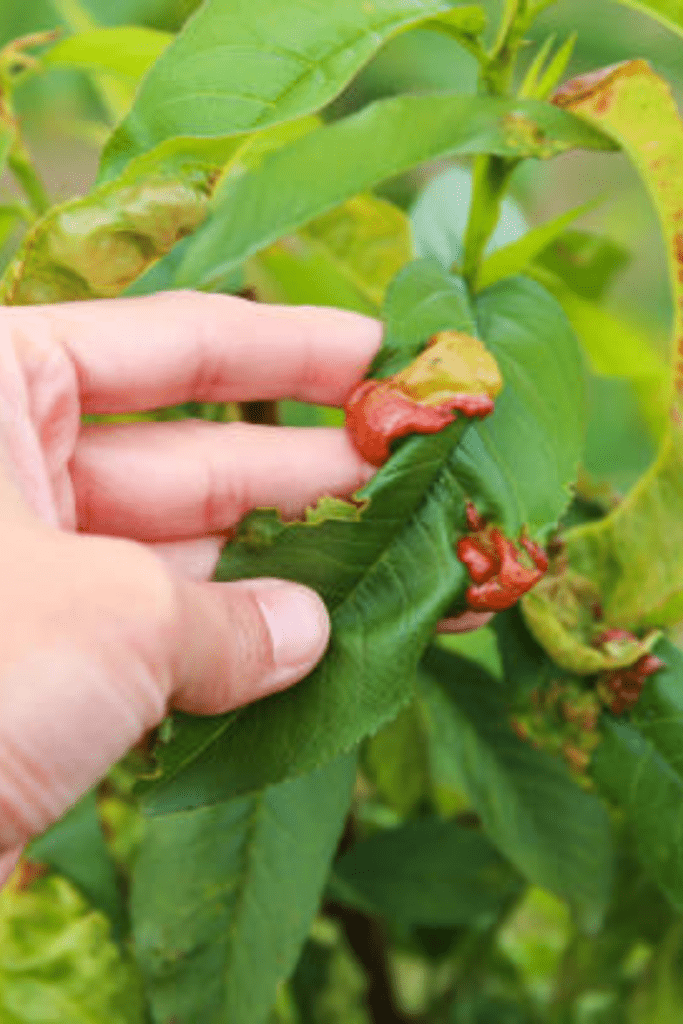
Despite your best efforts, pests and diseases can sometimes find their way into your garden. Here’s what you need to know about common spring vegetable pests and diseases:
Identifying and Preventing Common Pests
Pesky insects like aphids, slugs, and caterpillars can wreak havoc on your tender spring vegetables. Inspect your plants regularly for signs of damage, like holes in leaves or chewed stems. Introduce natural predators like ladybugs or use organic pest control methods, such as spraying a mixture of water and dish soap, or using neem oil. You can also create physical barriers like row covers to protect your plants from pests.
Recognizing and Treating Common Diseases
Diseases like powdery mildew and fungal infections can affect your spring vegetables. Keep an eye out for symptoms like discolored or spotted leaves, wilting, or stunted growth. Avoid overhead watering, as moisture on foliage can promote disease. If diseases occur, remove infected plants or plant parts to prevent further spread. Consider using organic fungicides or disease-resistant varieties to protect your plants.
Harvesting and Using Your Spring Vegetables
The moment you’ve been waiting for has finally arrived – it’s time to harvest your spring vegetables! Here’s what you need to know:
- Harvest in the Morning:
- For the best flavor and nutrient retention, harvest vegetables in the early morning when they are crisp and hydrated. This is especially important for leafy greens.
- Use Sharp Tools:
- Use clean, sharp scissors, pruners, or a knife for harvesting. Dull tools can damage plants and increase the risk of disease.
- Harvest Continuously:
- For crops like lettuce, spinach, and kale, practice cut-and-come-again harvesting. Harvest outer leaves regularly to encourage continuous production throughout the season.
- Check Maturity Signs:
- Harvest vegetables at their peak of maturity. For example, pick peas when the pods are plump, but before the peas become overly large and starchy. Read the specific guidelines for each vegetable.
- Avoid Overripening:
- Harvest fruits and vegetables before they become overripe. Overripe produce may have a loss of flavor and nutritional value. Regularly check for ripeness to ensure timely harvesting.
- Handle with Care:
- Handle harvested vegetables gently to prevent bruising or damage. Damaged produce is more susceptible to decay and may not store as well.
- Store Properly:
- Store harvested vegetables appropriately to maintain freshness. Refrigerate leafy greens, root vegetables, and most spring vegetables in the crisper drawer. Some vegetables, like onions and garlic, prefer cool, dry storage.
- Preserve Excess Harvest:
- If you have an abundance of spring vegetables, consider preserving them for later use. Options include freezing, pickling, or canning. This allows you to enjoy your homegrown produce beyond the growing season.
Knowing when to Harvest
Each vegetable has its own harvesting time, so it’s important to know when it’s ready. For example, lettuce should be harvested when the leaves are large enough to eat, but before they become bitter. Radishes are ready when they reach a desirable size, usually within a few weeks of sowing. Refer to seed packets or online resources for specific information on each vegetable.
Proper Harvesting Techniques
When it’s time to harvest, use sharp scissors or garden shears to cut the vegetables from the plant. Be gentle to avoid damaging the remaining plant and avoid pulling or ripping the vegetables. Some vegetables, like carrots, may require loosening the soil around them before pulling them out. Take care not to bruise or damage the vegetables during harvest.
Storing and Preserving Your Harvest
If you have more vegetables than you can eat right away, there are various methods to store and preserve your harvest. Some vegetables, like peas and beans, can be blanched and frozen. Others, like carrots and beets, can be stored in a cool, dark place for several weeks. Canning and pickling are also popular methods to extend the shelf life of many vegetables.
Delicious Recipes and Cooking Ideas
Now that you have a bountiful harvest, it’s time to put those spring vegetables to good use in the kitchen. From fresh salads to stir-fries and roasted vegetables, there are countless delicious ways to enjoy your homegrown produce. Seek out recipes that highlight the flavors of your specific vegetables or experiment with your own creations. Don’t be afraid to get creative and have fun with your spring harvest!
Conclusion and Final Tips for Successful Spring Vegetable Gardening
Growing your own spring vegetables can be a rewarding and enjoyable experience. To summarize, here are some final tips for successful spring vegetable gardening:
- Start seeds indoors or directly sow in the garden, following the recommended planting instructions.
- Provide adequate watering and irrigation, ensuring that the soil remains evenly moist.
- Fertilize regularly with organic fertilizers or compost.
- Give your plants enough space, and consider companion planting for a healthier garden.
- Be vigilant against common pests and diseases, actively preventing and treating any issues that arise.
- Harvest your vegetables at the right time, using proper techniques to ensure the best quality.
- Store and preserve excess harvest using various methods to enjoy your vegetables for longer.
- Get creative in the kitchen and try new recipes using your homegrown spring vegetables.
Remember, gardening is a learning process, and not everything will go perfectly. Embrace the journey, have patience, and most importantly, enjoy the fruits of your labor.
As you embark on your spring vegetable gardening journey, remember that patience, care, and attention will yield fruitful results. By following the tips and guidelines outlined in this article, you can create a thriving garden filled with an abundance of fresh and flavorful spring vegetables. Embrace the joy of harvesting your own produce, savor the taste of homegrown goodness, and take pride in your sustainable and rewarding gardening efforts. With each successful harvest, you’ll not only nourish your body, but also nourish your connection with nature!
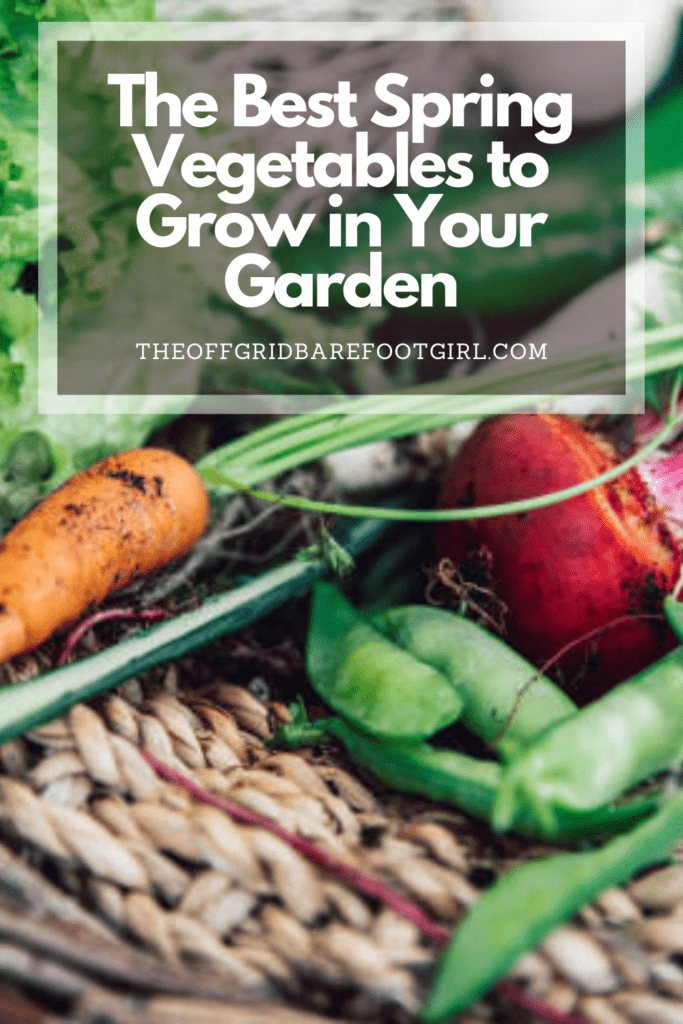
Frequently Asked Questions
1. Can I grow spring vegetables in containers or do I need a large garden space?
Sure, you absolutely can grow spring vegetables in containers if you don’t have a large garden space! Container gardening is a flexible and convenient option that allows you to grow a variety of vegetables right on your balcony or patio. The key is to choose the right containers and provide the necessary care for your plants. Make sure each container has sufficient drainage holes and use a potting mix with good water retention. Additionally, consider the size of pots according to the vegetables you want to grow; deeper pots work well for root crops like carrots, while shallower ones are suitable for lettuce or herbs. Ensure that your containers receive at least 6 hours of direct sunlight per day and regular watering, as they tend to dry out faster than traditional garden beds. As long as you meet these basic requirements, you’ll find yourself enjoying fresh and delicious spring vegetables in no time, all within the limited space provided by your containers!
2. What are some common pests that I should watch out for when growing spring vegetables?
When growing spring vegetables, it is important to be aware of common pests that could harm your plants. One prominent pest is the aphid, tiny insects that suck the sap from plant leaves, resulting in stunted growth and withering. Another frequent troublemaker is the cabbage worm, which attacks brassica family plants like cabbage and broccoli. These green caterpillars chew holes in the foliage, leaving behind a trail of damage. It’s also worth keeping an eye out for slugs and snails as they can quickly decimate tender seedlings during damp spring weather. If you’re cultivating tomatoes or peppers, make sure to beware of hornworms that consume entire leaves overnight, leaving bare stems behind. Implementing preventive measures such as regular inspections and organic sprays can help safeguard your prized spring vegetables and ensure a bountiful harvest.
3. How often should I water my spring vegetables?
When it comes to watering your spring vegetables, the frequency will depend on a few factors including the type of vegetable, weather conditions, and soil moisture levels. Generally, most spring vegetables require an inch of water per week, either from rainfall or irrigation. However, it’s important to monitor the soil regularly to ensure you’re not over or under-watering your plants. Stick your finger about an inch into the soil – if it feels dry at that depth, it’s time to water. Bear in mind that early in the growing season, when roots are still developing, more frequent watering may be required. As the plants grow and establish stronger root systems, you can gradually reduce the frequency of watering. Remember to water deeply rather than frequently shallowly; this helps encourage deeper root growth and drought resistance. Keep an eye on any signs of wilting or yellowing leaves as they can indicate inadequate hydration. Overall, staying attentive to your plant’s needs is key in ensuring they receive adequate hydration for healthy growth and yield.
4. Are there any special considerations for growing spring vegetables in colder climates?
When it comes to growing spring vegetables in colder climates, there are indeed a few special considerations to keep in mind. Firstly, timing is crucial when planting in these regions. It’s essential to wait until the soil has thawed and reached a temperature of at least 50°F (10°C) before sowing seeds or transplanting seedlings. Additionally, utilizing protective measures such as row covers or cold frames can be highly beneficial. These structures act as mini-greenhouses, trapping heat and shielding plants from harsh winds or frosty nights. Another important consideration is selecting cold-tolerant vegetable varieties that can withstand lower temperatures and shorter growing seasons. Opting for varieties like kale, spinach, radishes, or peas will increase the chances of a successful harvest. Adequate soil preparation by adding compost or organic matter will also promote healthy growth. Regularly monitoring the weather forecast and providing sufficient watering during dry periods are essential to guaranteeing optimal plant development in these colder climates.
Summary
I hope I have inspired you to grow the best spring vegetables in your garden with these tips and products.
If you were encouraged by this post, I invite you to check out my FREE Printables Page for fun free printables, planners, and charts.
ENTER MY FREE Printables Page HERE
Here are some more of my composting and gardening inspiration posts to check out!
Seed Starter Mix: How To Make Your Organic Seed Starter Mix At Home
How to Grow a Productive Canning Garden
How to Plant and Grow a Salsa Garden
Easiest Heirloom Vegetable Seeds to Grow Now
How to Use the Hand Twist Claw Tiller: Tackling Tough Soil
Planning Your Garden: How to Plan a Vegetable Garden: Expert Green Thumb Tips!
Winterizing the Garden: How to Winterize Your Vegetable Garden: Step-by-Step Checklist
Mulching the Garden: How to Make Leaf Litter Mulch
Grow a Pumpkin Patch: How to Grow a Pumpkin Patch in Your Backyard
How to Win a Giant Pumpkin Contest
How to Grow a Fall Garden: 9 Best Fall Crops
Clever Ways to Incorporate Indoor Composting into Your Home
How to Start Composting for the Garden: A Step-by-Step Guide
The Ultimate Guide to Composting in Your Suburban Backyard
Why I Built A Survival Garden in My Backyard
How to Grow A Foodscape Garden From Scratch
16 Best Medicinal Herbs to Grow in Your Garden Now
Blessings,
The Off Grid Barefoot Girl




